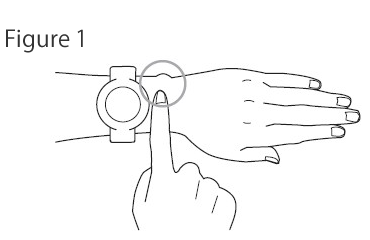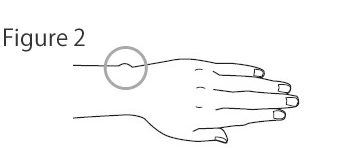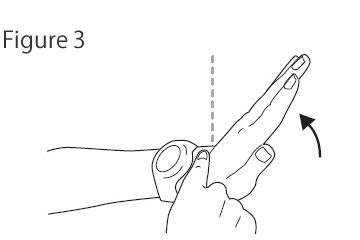Precautions for heart rate measurement
In order to measure your heart rate properly, you need to pay attention to the following points.
Precautions when measuring
Heart rate measurement function
- This unit displays the estimated heart rate based on the pulse measured by the optical sensor built in the back (back lid). This value may have an error due to the following conditions.
- Wearing state of the watch to the arm
- Features and condition of customer’s arm
- Training type and intensity
- Dirt around the sensor or sweat, etc.
- For this reason, the heart rate data displayed by this watch is for reference only, and its accuracy is not guaranteed.
- The heart rate measurement function of this watch is intended for recreational use and cannot be used for any medical purpose.
Movements that affect heart rate measurement
- Activities or certain movements* that move only your arm violently can affect your heart rate measurement and cause errors in the heart rate data displayed by your watch.
*Movements that move the wrist violently, movements that knead the wrist, (eg, playing percussion instruments, tennis, etc.)
Warming up before training
- Blood circulation might be weakened due to low temperatures or cold hands, etc, which might affect heart rate measurement.
- When training with heart rate measurement, please keep in mind an appropriate warm-up such as warming the body in advance.
Precautions when wearing a watch
How to wear a watch is important for measuring heart rate with good accuracy.
Especially when exercising such as training or running, adjust as follows so that the watch does not shake or shift.
- Loosely wear the watch to your wrist and place one or more fingers on the right side * of the body (Fig. 1).
*When wearing the watch to your right arm, place your finger on the left side of the body.

- If the watch covers the ulnar protrusion (circled in Fig. 2), increase the number of fingers to avoid the ulnar protrusion.

- There are individual differences in the position and shape of the ulnar protrusions.
- Adjust the wearing position of the watch so that one or more fingers are separated from the wrist joint to the side of the watch when the wrist is bent (Fig. 3).

- After deciding the wearing position, tighten the band firmly until the watch and your arm do not slip.
- Keep your arm in close contact with the sensor so that the light of the sensor does not shine to the outside.
- Do not overtighten the band.
- If the watch covers the ulnar protrusion (circled in Fig. 2), increase the number of fingers to avoid the ulnar protrusion.

